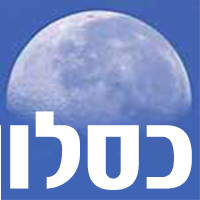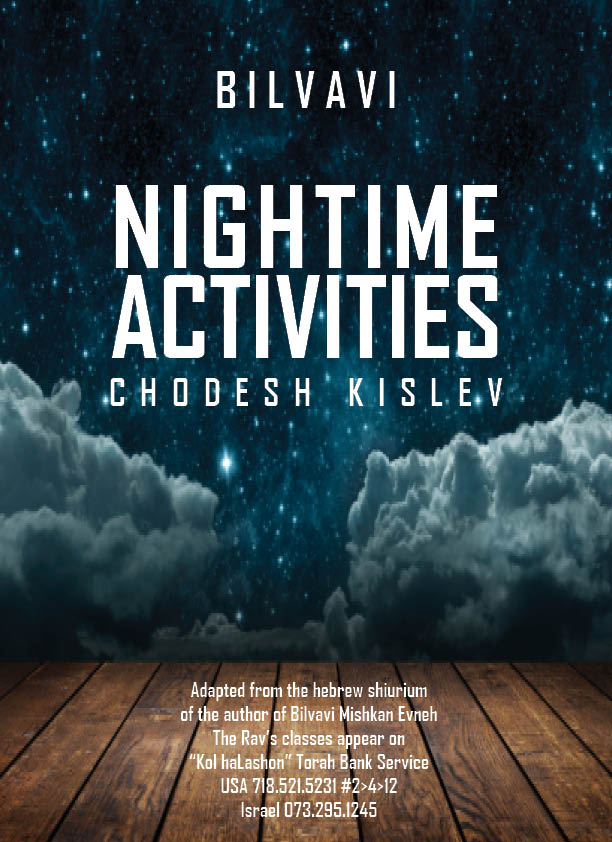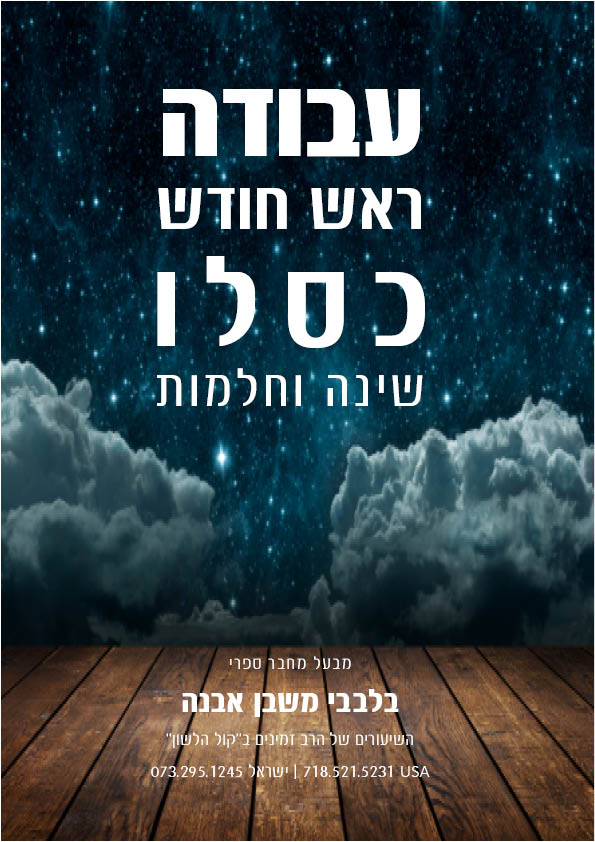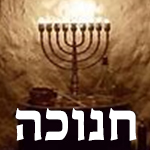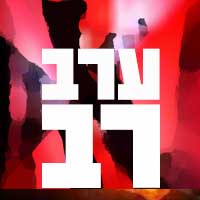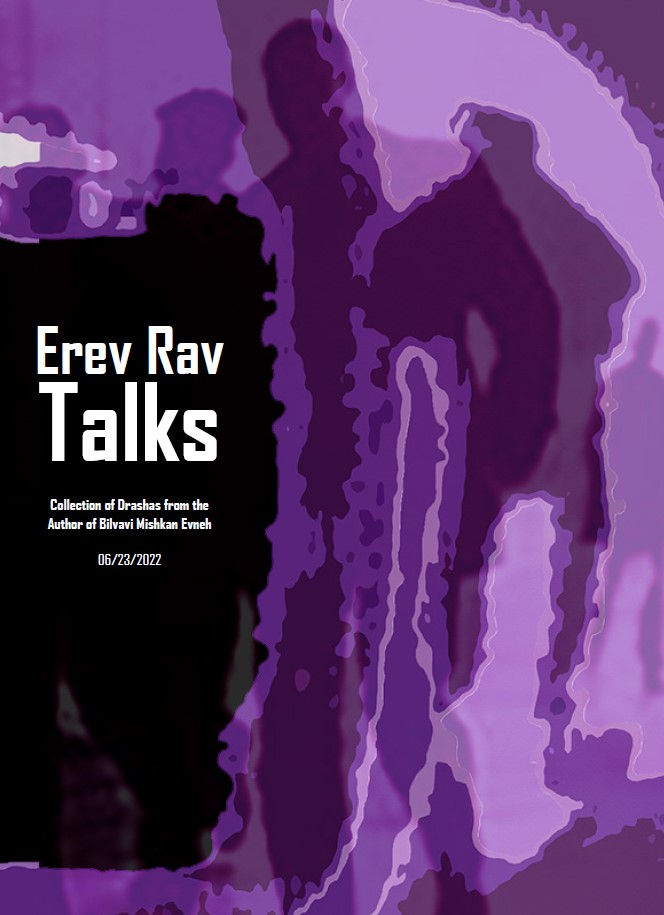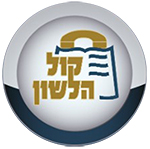- להאזנה פסח 057 אפיקומן-הויה-אמונה תשפא
057 Afikomen Havayah & Emunah
- להאזנה פסח 057 אפיקומן-הויה-אמונה תשפא
Pesach - 057 Afikomen Havayah & Emunah
- 1988 צפיות
- גירסה להדפסה
- שלח דף במייל
Afikoman – The Hidden Light That Is Stored Away For The Future
When there was a Beis HaMikdash, we ate the korbon pesach after we were satisfied from the Seder meal. Now that we don’t have the Beis HaMikdash, we eat the afikoman, a piece of matzah, in memory of the korbon pesach, at the end of Seder when we are satisfied and full.
One whole piece of matzah is broken into two pieces. The smaller piece remains on the K’earah (the Seder plate), and the larger piece of matzah is for put away for Tzafun, to be eaten as afikoman. The afikoman is called Tzafun because it is like the ohr hatzafun, the hidden light, which has been stored away for the tzaddikim in the future. On a similar note, the wine of the 4 cups is like the wine that has been squeezed from the grapes of the first days of creation (the yayin ha-meshumar), which has been stored away for the tzaddikim in the future.
Divided Matzah: The Division of Hashem’s Name of Havayah[1]
Let us explore the depth behind the division of the matzah into two parts.
Matzah is from the word matzah, to fight, and this is because the matzah is broken up and divided into pieces, just as a fight creates division. But the word matzah is also from the word metzius, hinting to the One Metzius, the One Reality, Who is Hashem, Whom there is none other besides Him. That is the inner implication of the word matzah.
The metzius of Hashem is represented by Hashem’s name of havayah, whichis divided on some level. Chazal explain that the letter heh of Hashem’s Name is broken up into 2 letters, the letter daled and the letter vov, and so is the afikoman divided into two parts. The letter daled of Hashem’s name of havayah is represented by the smaller half of matzah, eaten at the beginning of the Seder, and this is because the letter daled hints to dal, a poor person, who has nothing of his own.
The beginning of the Seder focuses on the poor person, on inviting all the poor to the Seder, and on how the matzah is lechem oni, the poor man’s food. The smaller half of matzah which is placed on the K’earah is the lechem oni aspect of the matzah. In contrast to this, the larger half of matzah, represented by the letter vov of Hashem’s name of havayah, is stored away to be eaten for the end of the Seder, for it represents the ohr hatzafun, the light that is hidden away for the tzaddikim.
Matzah Reveals Havayah and Emunah
Going deeper, matzah is from the word metzius. We recognize the reality of Hashem through recognizing His havayah, through His name of havayah. There are four letters of Hashem’s Name, and in the soul as well, the havayah of Hashem filters down into our soul. This is the deepest faculty of our soul, known as havayah. It is explained as nitzotz Borei b’nivra, “The spark of the Creator, within the created being," the part of our soul that recognizes Hashem Himself, so to speak. Hashem revealed His very havayah (His very reality) in Egypt, so to speak, when He said, “I, Hashem, am going out in Egypt.” Hashem was revealing His very havayah, as it were, amidst depraved Egypt, to herald our redemption from Egypt.
Below the point of havayah (reality) is the point of emunah (belief), the power to believe in reality – the power to have emunah in Hashem. Matzah is called “food of faith”. Thus, besides for being associated with havayah, the matzah is also associated with emunah. Thus, matzah is a portal to emunah sinceit reveals emunah.
Afikoman – The Emunah Revealed By The Matzah
Emunah in Hashem, revealed by the matzah, is particularly revealed by the kind of matzah that is the afikoman. The word afikoman is from the words afi and mekoman, and the word afi has the gematria of the name of havayah and the name of adnus together, and the word mekoman has the gematria of Yam Suf, alluding to the splitting of the sea which was on the seventh day of Pesach, where there was a revelation of emunah: “And they believed in Hashem and in Moshe His servant.” This insight is from the sefer Bris Kehunas Olam. But the emunah that was shown at the Yam Suf is rooted in the emunah revealed by the afikoman.
The matzah is first divided and scattered into pieces, at the Seder meal. The word for “scattered” is pizur, equal numerically to 287, equal to the word Pur (the lots which Haman cast on Purim), which had 2 sides to it. Haman, who was Amalek, is the concept of safek (doubt), where there are 2 sides, 2 options, the opposite of the concept of emunah where there is only 1 option (the reality of Hashem). The Torah says that when Moshe’s hands were raised with emunah in Hashem, Amalek lost its power, because emunah is the power that counters Amalek.
Chazal state “Who is wise? One who can see what will happen.” A wise person can see the end already at the beginning. At the beginning of the Hagaddah, we speak about the questions of the 4 sons and what we answer them. What do we tell the wise son? We tell him about the afikoman- that we don’t eat anything after the afikoman. We are telling him at the beginning of the Seder about the end of the Seder, which is the afikoman. Why is this so important? The afikoman is not simply about eating the other and bigger half that was put away for the end of the Seder. Rather, the afikoman is the other half of the whole- it completes the first act of eating at the beginning of the Seder. In other words, the afikoman shows us that what seemed at the beginning of the night as just a broken piece of matzah was actually part of a greater whole. The afikoman connects together the two pieces of matzah into one act of eating, revealing how both pieces of matzah are part of one havayah, two halves of the same whole.
Eating the afikoman is the part of the Seder that is called Tzafun, which means hidden. This is not simply because the afikoman was hidden for the end of the Seder, but because the afikoman represents the ohr hatzafun, the hidden light that is stored away for the tzaddikim in the future. At the end of the night of Pesach, this hidden light is shining. The hidden light is also shining strongly during the End of Days, where “the tzaddik shall live by his emunah," as the navi Habakkuk said (Gemara Makkos 24a). The prophet said that he inner essence behind the matzah: is all about revealing emunah. For when we are at the end (and when we are in the final generations), that is precisely where we reveal emunah.
Hagaddah – Beginning With Division and Ending With Oneness
There are two different words in Lashon HaKodesh that mean telling over a story: Agadah, and Hagaddah.
The word agadah is from the word igud or agudah, to unite. The story told over in an Agaddah (such as Agadta stories found in the Gemara) will unite together many details and parts of a story in order to bring out one point. This is because Agadah begins with the letter aleph, which is equal to one, symbolizing unity. Hence, an agaddah is when a story is unified in its details.
The story of a Hagaddah, however, is a story that begins with the letter hey. The letter hey implies division. As mentioned earlier, the letter hey is really a divided letter, with the letter daled and a broken letter vov. Thus, the letter hey implies division. We can also see this idea of division within a story in the Hagaddah that we recite on Pesach night. We start off the Hagaddah with division: The matzos are divided into 2 parts, and then we divide the 2 even further by dividing it into 4, with the 4 questions, the 4 sons, the 4 cups, etc. The Maharal explains that the number 4 represents the very idea of division, because there are 4 corners of the earth which distances all inhabitants of the world. Four is the idea of division, and the number 4 is the ongoing theme of the beginning of the Seder.
But as we get closer to the end of the Seder, the details of the Hagaddah’s story begin to combine together more and more, slowly unifying into one unit that expresses our emunah in Hashem. The division begins with 2 pieces of broken matzos, then 4 questions, 4 sons, etc. and eventually the story emerges as one single theme: emunah. The division becomes unified. In the Hagaddah, we start with division, and we end with oneness, with unity. With the 5th cup of the Seder, we unify all the details together, for the role of the number 5 is to unify everything into one.[2]
Chazal said that one should speak about the story of the Hagadah all night (until he falls asleep). What is the depth of this? It is because Pesach is the words peh sach, the “mouth shall speak," it is a night of revealing our true speech, to speak about emunah, and therefore it is the root of speech. The Seder night on Pesach is all about talking, and what kind of talking? To talk about that which reveals emunah in Hashem. It is the root of our speech.
The Two Levels of Matzah
The Gemara says matzah is called lechem oni for two reasons. Firstly, it is lechem that we talk a lot over (onin alav devarim harbeh), we say a lot of words over this matzah [through reciting the Hagaddah]. Secondly, it is called lechem oni because it is a poor man’s bread, since it was eaten in haste, with no time for the dough to rise. On an inner level, the matzah is really both, and we fulfill both of these aspects of matzah at the Seder, as follows.
The matzah we eat at the Seder is broken into 2 pieces. We eat the smaller part of the matzah at the beginning of the Seder, and this matzah is the lechem oni aspect of the matzah. The Shelah explains that the larger piece of matzah eaten at the end, which is eaten when we are satisfied, is like a wealthy man’s bread, which is not eaten out of hunger but precisely after one is satisfied. A wealthy person eats after being satisfied, whereas a poor person eats out of hunger.
Thus, there are two levels of matzah we eat at the Seder. There is matzah of lechem oni, which we eat at the beginning of the Seder. This is matzah eaten out of hunger, a poor man’s bread, implying the lower level of matzah, where we are eating because something is missing and we need to satiate that hunger. This matzah is also eaten together with the maror, which is bitter, because the matzah eaten at the beginning of the Seder is the poor man’s bread, which is eaten amidst a state of deficiency and bitterness. The later act of matzah - the afikoman - is eaten precisely after we are satisfied, when we are no longer hungry. This is the higher level of matzah, which is not the poor man’s bread, but “the bread which we talk a lot over” where we discuss words of emunah. This is afikoman, the aspect of matzah that represents the essence of Pesach, peh sach, to talk words of emunah. This is the level of matzah that is called the “bread of faith.”
We eat the afikoman precisely before chatzos (midnight), before the time when the Geulah happened. The depth of this is because when the Geulah is about to be revealed, Hashem says “I, Hashem, am going out in Egypt," He reveals Himself at the darkest and lowest point of our exile, before He takes us out. The word afikoman contains the word man, the manna, because it is like the eating the manna. The words afiko man mean, “to eat manna as we are on the way out.”
Since the afikoman is eaten right before the time when Hashem took us out of Egypt, where Hashem revealed His havayah (so to speak), it is the level of matzah which reveals havayah. When we had the Beis haMikdash and we had the korbon pesach, we would taste havayah. Nowadays, instead of eating the korbon pesach, we eat the matzah of the afikoman. We are tasting the emunah of the havayah, but we are not tasting havayah itself. Therefore, today's matzah at the highest level can only be the emunah of havayah. The afikoman is therefore stressing the concept of havayah unlike in the times of the Beis HaMikdash when we had the korbon pesach.
Afikoman Is Like Eating From The Eitz HaChaim
Let us explore the aspect of the afikoman being eaten precisely at the end of the Seder, when we are satisfied and no longer hungry.Until we eat the afikoman, all of our eating is on the level of eating from the Eitz HaDaas,where we are eating like a poor man: “A poor man is only poor in his daas.” When we eat out of hunger, we are eating to satisfy ourselves, so it is self-serving. But at the end of the Seder, where we eat afikoman, we are eating after being satisfied, meaning that we not lacking anything and we are eating on a higher level, not for our own purposes. Such eating is like eating from the Eitz haChaim.
“The tzaddik shall live by his emunah.” We reveal the essence of Pesach at the end of the Seder of peh sach (the mouth that talks), which is equal in gematria to the word chaim, a hint to the Eitz HaChaim. The eating from the Eitz haDaas was an act of taavah, as the Torah says, “It was desirable to the eyes.” It was eating for self-serving reasons. The eating on the level of the Eitz HaChaim, by contrast, is when one does not eat to satisfy their hunger, but to eat from a place of satisfaction of not lacking anything. Thus, eating the afikoman when we are full and satisfied resembles eating from the eitz haChaim.
The depth of all eating on the night of Pesach is to arrive at this final meal, the afikoman, where we are not eating because we are missing something. What is at the depth of this? When we talk about the matzah during the Seder throughout the Hagaddah, we are really speaking about the “word of Hashem” that is in the matzah. We are releasing the hidden potential found in this matzah! It looks simply like broken pieces of matzah, but when we speak about the matzah we are increasing our emunah and we reveal the word of Hashem contained in this matzah.
This is why the afikomen (the light of the future) is tzafun, it is hidden for the tzaddikim in the future. In the future, there are no mitzvos, because the world of action will cease. Today we have all the mitzvos, because we are living in a world of action, and even our Torah today is on the level of action. In the future, the world of action ceases and we remain with the level beyond action, which is speech – with the “word of Hashem” that is found in everything. That is what is hidden for the future. Thus we hide the afikoman to reveal that there’s a part of the matzah which is hidden: the word of Hashem that’s found in the matzah. When we reveal it and we eat it, we are eating from the “word of Hashem," thus it is like eating the Eitz haChaim.
The Taste That Remains With Us: The Word of Hashem
There are two abilities in our mouth: the ability of taste, and the ability of speech. Normally, when we are eating, we cannot talk, and vice versa. When we taste food and then chew it and swallow it, the taste is gone a moment later. As is known, we must not eat anything after the afikomen, so that its taste will remain with us afterwards. The depth of this is really because the afikoman is like eating from the manna, where the taste lingered in our mouth long after we ate it.
On a deeper level, we are eating from the “word of Hashem” that is found in the afikoman and that is why its taste remains with us. Eating the afikoman infuses us with the “word of Hashem” that we absorb into our system. We reveal the root of speech which enables our sense of taste to stay with us, where our speech and taste become fused together. By not eating anything afterwards, we reveal how the word of Hashem remains with us, with nothing else but this “taste” – to show that there is nothing else besides for Hashem’s word.
We can taste a semblance of the Eitz HaChaim by tasting the hidden “word of Hashem” that is found in each thing. The taste of the afikoman remains with us because it is a taste that continues longer after it is experienced. It is a taste that is continuous and keeps going and doesn’t end. This is also known as taamei Torah, the secrets of Torah, or the “taste” of Torah. This is also the depth of why “The Torah was only given to those who eat the manna” – it is because the Torah is revealed to us only when we “taste” the secrets of Torah which have been hidden away for the future.
On a related note, the depth of the afikoman is “afiko man," to “bring out” the potential of this food which is compared to the manna. What is the potential that lays inside the afikoman, which we are bringing out? It is essentially the emunah that is found in this matzah, the afikoman which is compared to the manna. In that way, we are tasting the “word of Hashem” that is found in it, and this is the meaning of how matzah is the “food of our faith," מיכליה דמהמנותא.
[פסח 057 אפיקומן-הויה-אמונה תשפ"א]
[1] (lit. “being”); the Tetragrammaton, G d’s Divine Name of the four Hebrew letters yud-hei-vav-hei, expressing His transcendence of time and space
[2] Editor’s Note: For example, the first 4 layers of our soul are divided from each other, but when we reach our 5th and deepest level of the soul, the Yechidah, our entire soul is unified under one unit.
NOTE: Final english versions are only found in the Rav's printed seforim »


